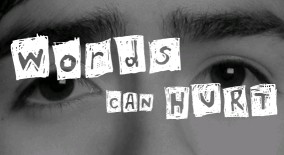When things go wrong in
children's lives, no response of theirs is more normal or natural than a sudden
outburst of anger. An event that to an outside observer often seems unimportant
or trifling has the potential to frustrate or even overwhelm a child. Children,
of course, have the right to get angry, and they display their anger in a
variety of ways. The problem is, however, that when they fly off the handle
they may act in inappropriate ways that only intensify their anger and make a
bad situation worse. To understand and manage the energy let loose when they
get angry is a difficult but invaluable lesson for children to learn. Anger can
be the most complex and confusing of all emotions. First graders are watching 'What To Do When You Get Angry', a short video that demonstrate appropriate ways in which to express angry feelings.
Some highlights from this program
and our subsequent classroom discussion:
 Stop and Cool Down/Use
YourWords: using their words, saying how they feel about what happened, and
then listening to what the person who made them angry has to say, can make
angry feelings go away.
Stop and Cool Down/Use
YourWords: using their words, saying how they feel about what happened, and
then listening to what the person who made them angry has to say, can make
angry feelings go away.
Angry Energy: if there's
no one to identify as the source of your anger, the best way to handle angry
energy is to turn the energy to positive use by doing something like running or
throwing a ball. Sometimes we are just angry at ourselves.
Say How You Feel: keeping
angry feelings bottled up only makes things worse, and that before they can
deal with their anger, they first need to admit that they are angry.
Solve the Problem That's
Making You Angry: if they are able to calm down before exploding in anger
when a problem arises, they will be much more successful in solving their
problem.
Find Something Fun to Do:
when they get angry over a situation they can do nothing about, the best thing
to do is to calm down, and think of something fun to do.
Some suggested children’s reading on the subject of anger: Agassi,
Martine, Ph.D. Hands Are Not For Hitting. Free Spirit Publishing, 2000, Goodsell,
Jane. Toby's Toe. William Morrow, 1986, Jonell, Lynne. When Mommy Was
Mad. Grosset & Dunlop, 2002.
And for the adults: Paul, Harry
A. When Kids Are Mad, Not Bad: A Guide to Recognizing and Handling Children's
Anger. Berkley Publishing Group, 1995, Morris, Bonnie Rothman. “Scream at
Your Own Risk (and Your Children's).” The New York Times, November 9,
2004, Fox, Laura. I Am So Angry I Could Scream: Helping Children Deal With
Anger, New Horizon Press, 2000.











